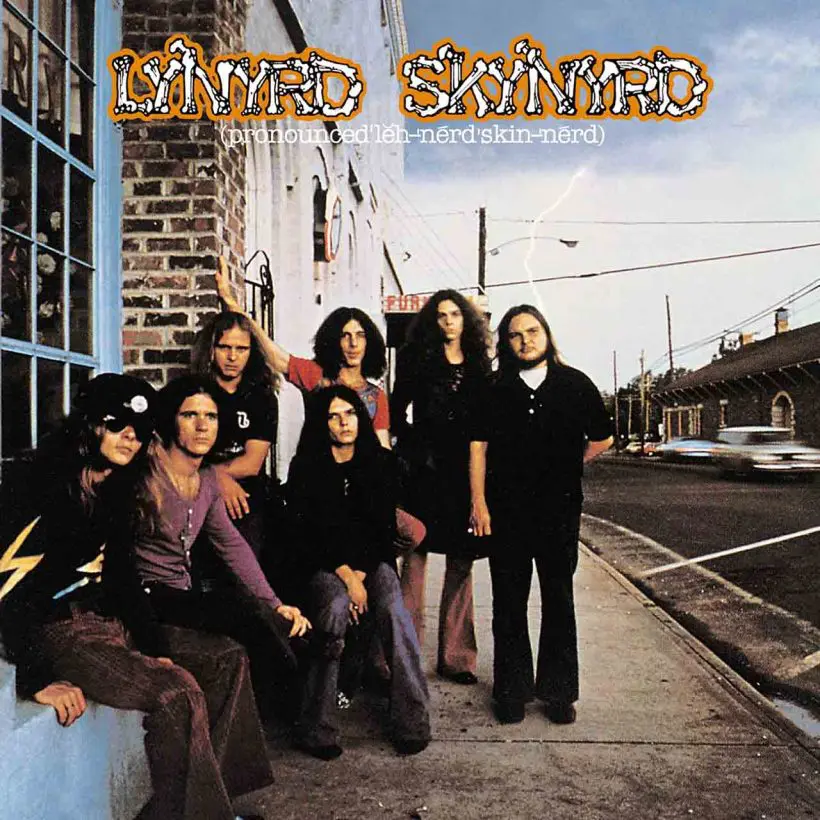Gear Guide: Lynyrd Skynyrd’s ‘(Pronounced ‘Lĕh-‘nérd ‘Skin-‘nérd)’
We break down the gear used on the group’s iconic debut album.

It all began in a sweltering wooden cabin next to a creek in rural Florida, and yet – despite its humble beginnings – the debut album that Lynyrd Skynyrd released 50 years ago has since delighted fans across the world. It’s not hard to see why.
The six-piece on the record – singer Ronnie Van Zant, guitarists Gary Rossington and Allen Collins, bassist Ed King, keyboard player Billy Powell, and drummer Bob Burns – rehearsed the album in their rented cabin 15 miles south of Jacksonville, where they could make as much noise as they pleased. That beautiful noise mixed blues, country, and rock, relying on an enviable selection of classic guitars – as well as a less familiar instrument or two.
Order Lynyrd Skynyrd’s FYFTY now.
Soon after completing (Pronounced ‘Lĕh-‘nérd ‘Skin-‘nérd), the band would develop a three-pronged guitar assault as Ed King shifted to guitar when original bassist Leon Wilkeson rejoined the fold (hence the seven-piece band on the cover). In fact, King does play guitar briefly on Pronounced, notably the slide solo on “Mississippi Kid.” But for this first album, it was the mighty combination of Rossington and Collins that drove Lynyrd Skynyrd forward with twin guitars on songs such as “I Ain’t The One” and “Things Going On.”
“Free Bird” guitars
Allen Collins mostly used his 1964 Gibson Firebird I during the sessions at Studio One in Doraville, Georgia. This early version of the Firebird is known to guitar nuts as the “reverse” style, because the body’s horn-less upper section makes the lower horn seem to stick out even further – a look almost the reverse of some regular solidbody electric guitars.
Collins’s guitar had been modified with different pickups and a new neck, and it served him well, as heard on his lengthy “Free Bird” solo. Gary Rossington used his cherry-finish 1969 Gibson SG Standard for the mournful slide guitar heard almost from the start of that celebrated track, wearing as a slide on his middle finger a small bottle emptied of its cold-relief tablets – a choice recommended by Duane Allman. Rossington also played his 1969 Gibson Les Paul Goldtop and sunburst ’59 Les Paul Standard, Collins a white ’69 Gibson SG Standard.
Mellotron strings
It wasn’t all straight-ahead rock sounds. The ethereal orchestral-type sound on “Tuesday’s Gone” as the second verse rolls into the chorus is courtesy of producer Al Kooper and a Mellotron, a keyboard sometimes described as the original sampler. It used tape loops of real instruments to deliver backing rhythms, accompaniments, and lead sounds and was originally intended as a sort of high-end entertainment system to rival the Hammond organ. It became popular in the ’60s and ’70s as a distinctive way to approximate orchestral instruments – as Kooper demonstrated.
Four years after Pronounced, the band would be ripped apart in tragic circumstances, but this first album still stands as one of the most impressive rock debuts ever. So much of that is down to the rigorous rehearsals the band undertook in that famed cabin, but the gear they used shouldn’t be overlooked either.













Mick Taylor
August 13, 2023 at 11:32 am
Brilliant
Bish
August 13, 2023 at 1:10 pm
Grew up listening to this great album
Back in the day, all the shows in both
Phoenix & Tucson Arizona, they play
At Ozark music festival in 1974,
My Woodstock. Saw ROSSINGTON COLLINS BAND
& the reunion tour the second show in LA
Part of my youth & still listening
SteveO
August 13, 2023 at 1:39 pm
Hey Bish, goin’ to phx tonite yo see ‘rm again…I know you’ll be there bro…what’s your number, email…let’s celebrate another good one there.